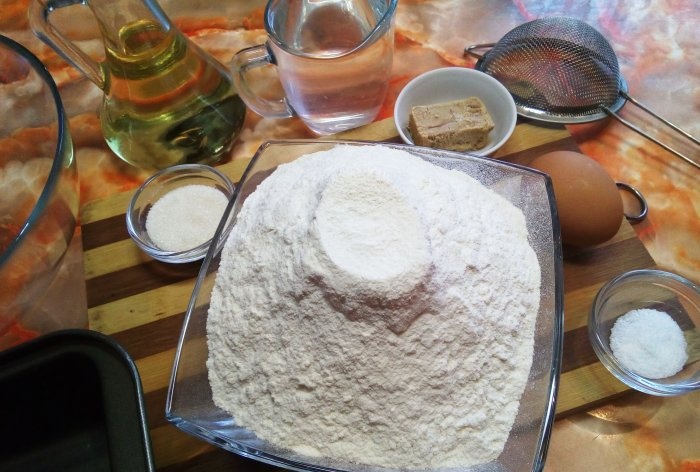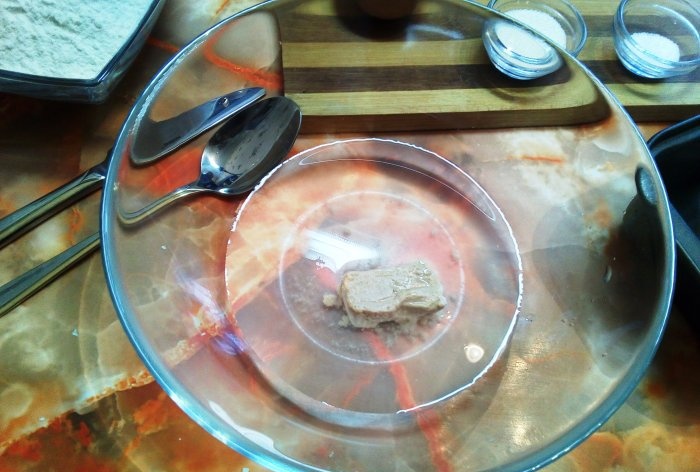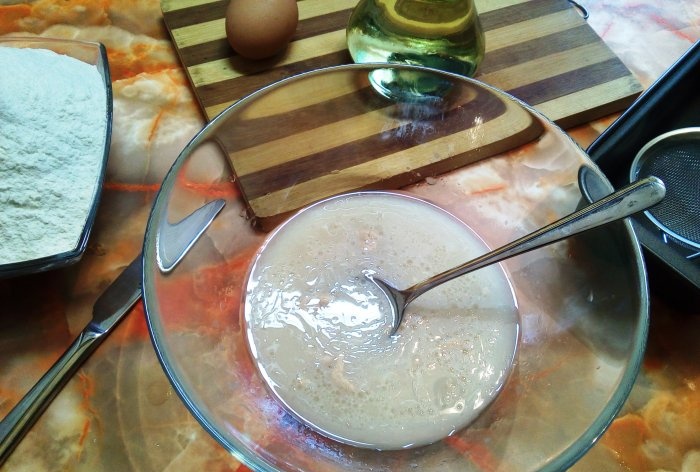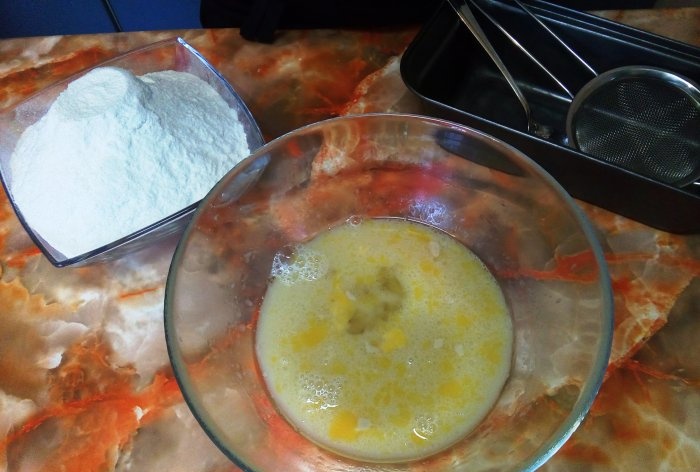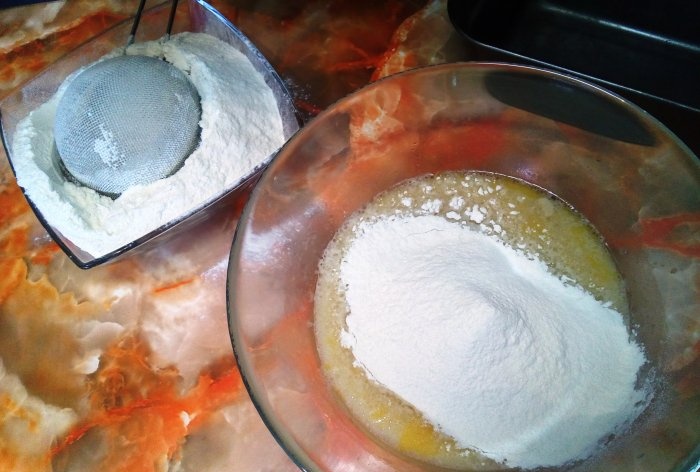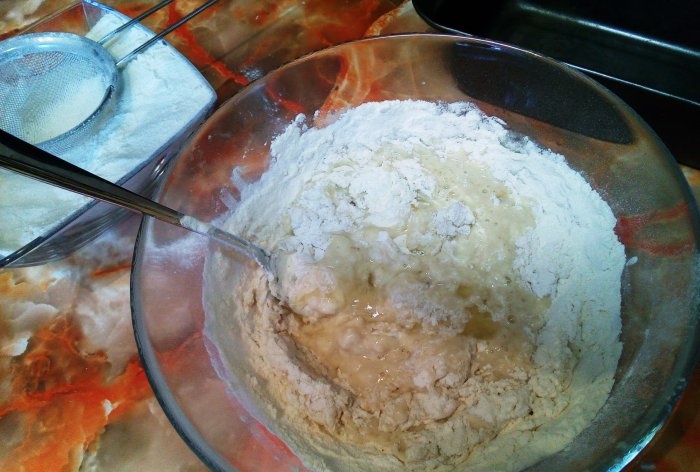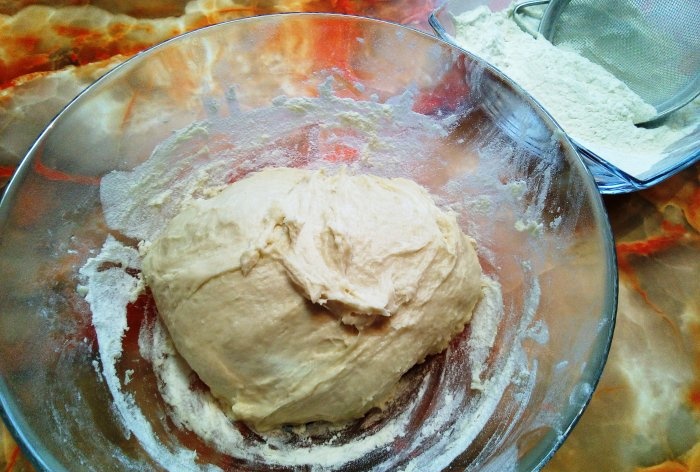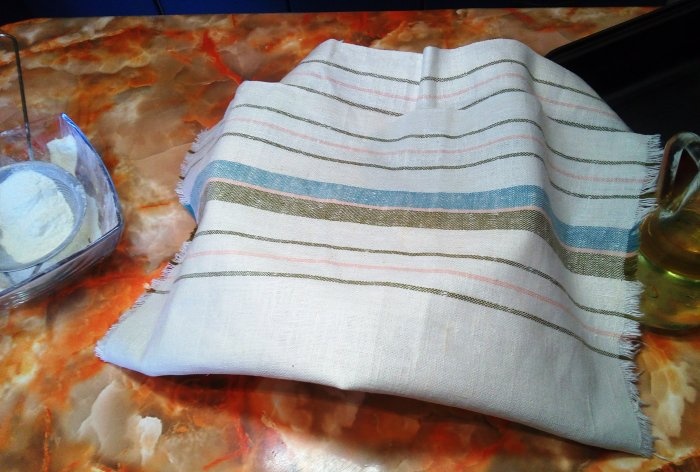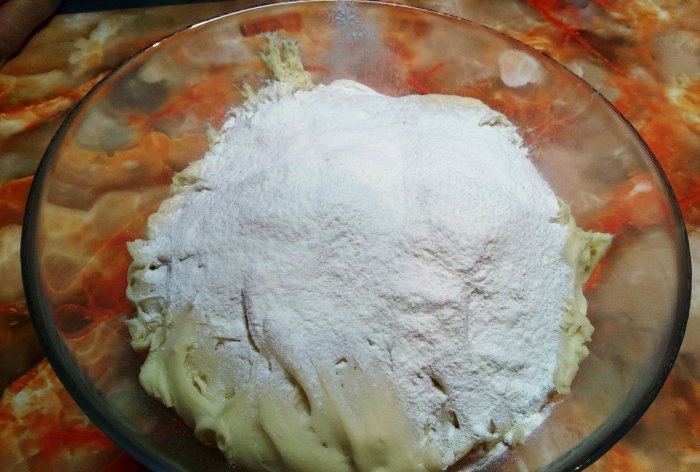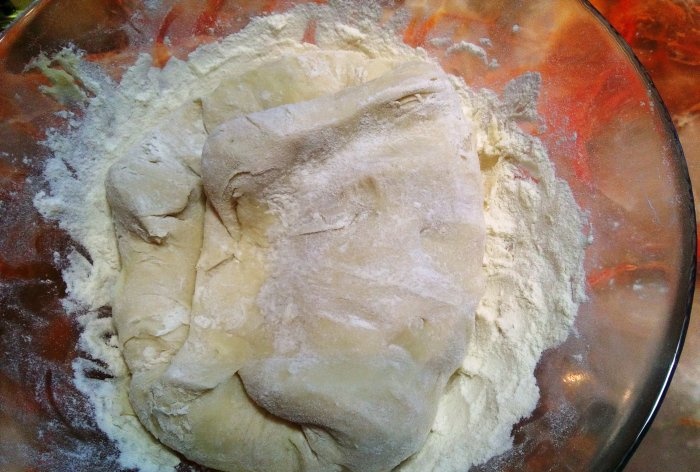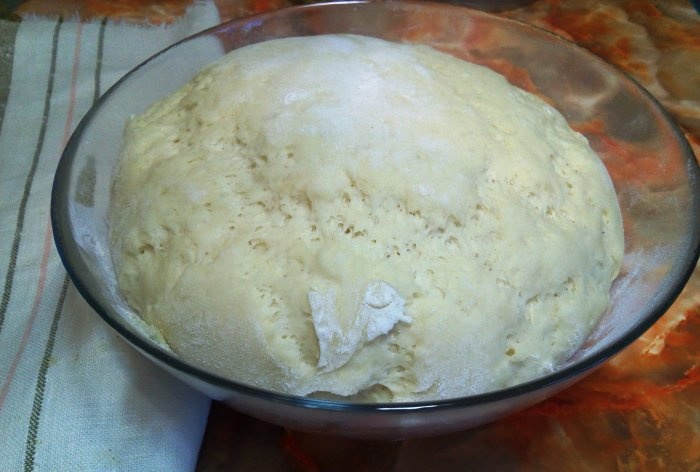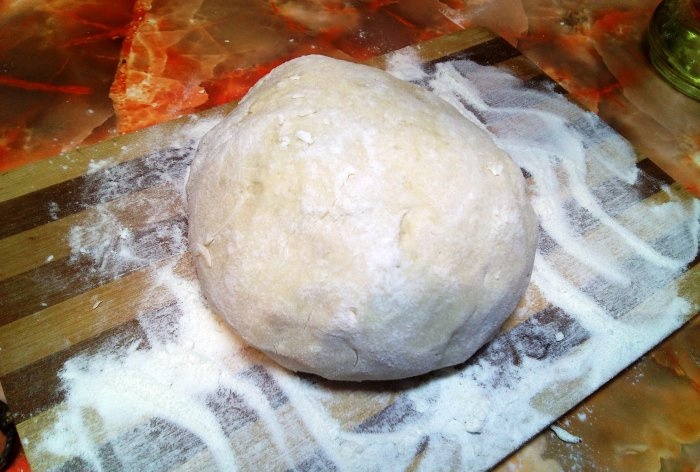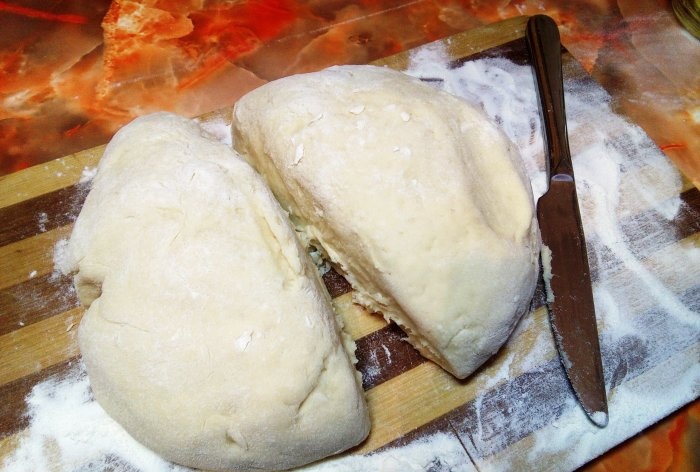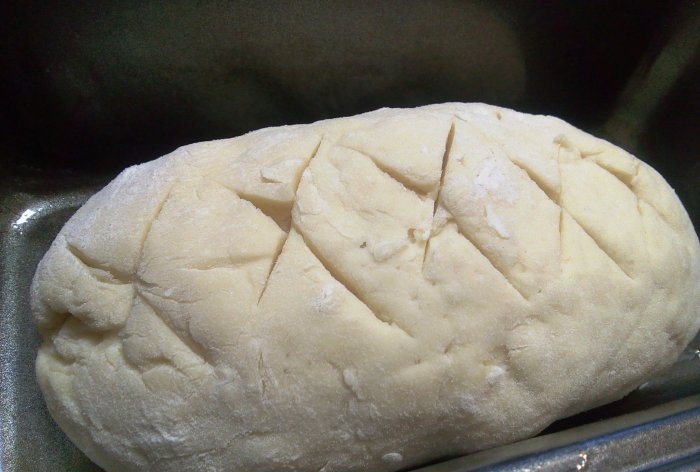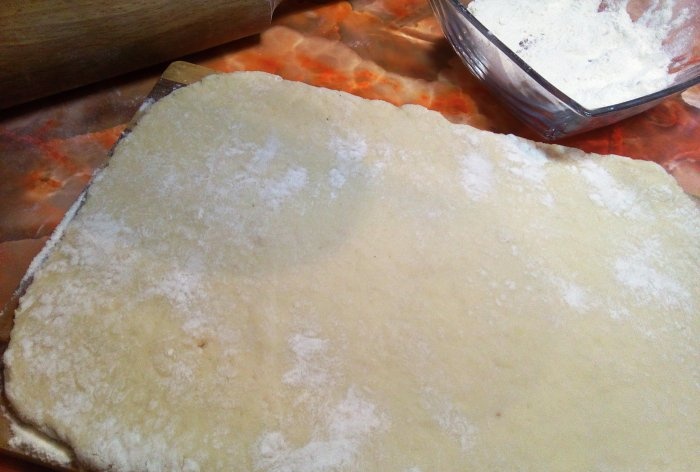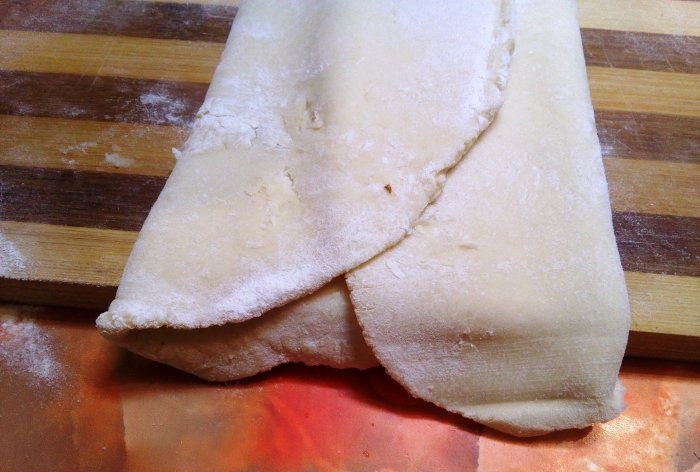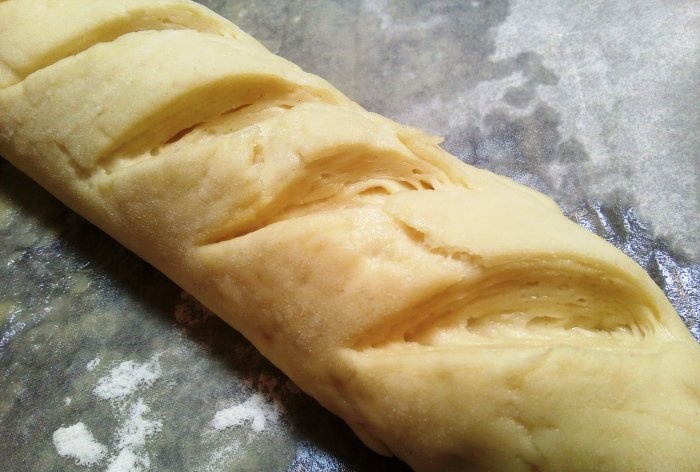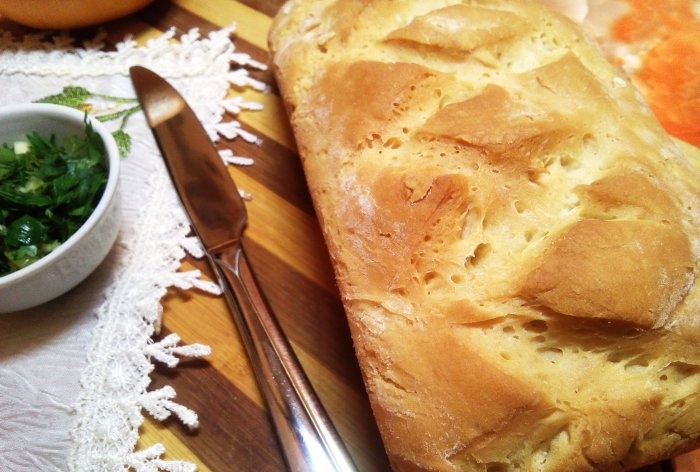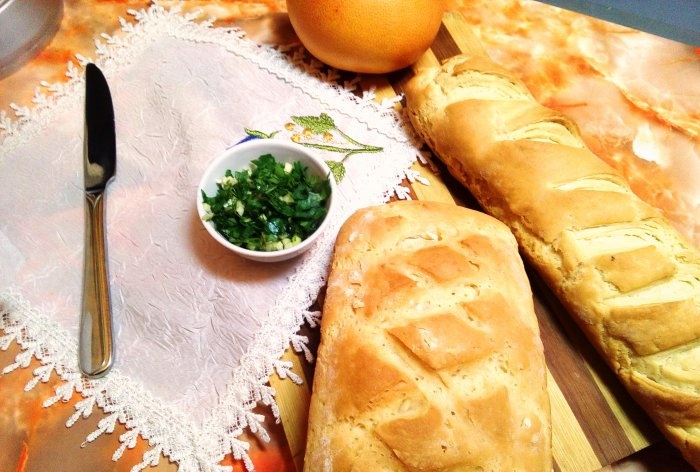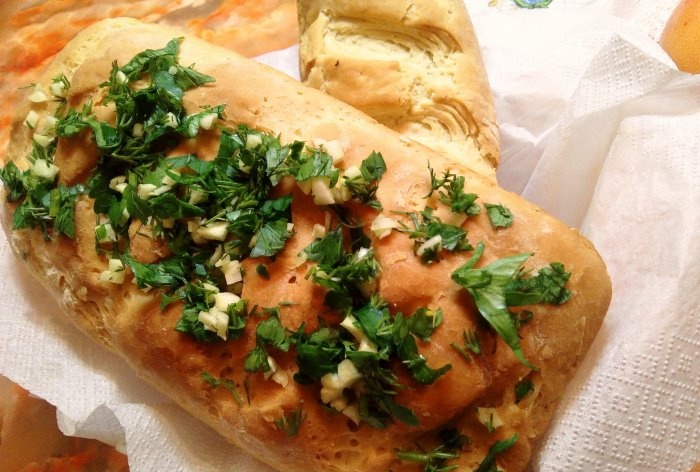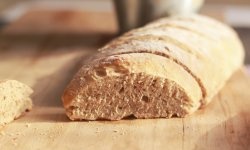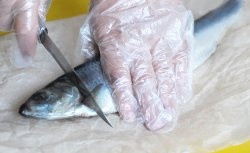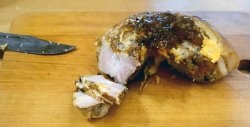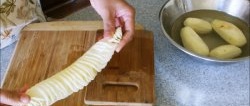How to easily bake homemade bread without a bread machine
Homemade bread is baked for many reasons: it turns out very tasty, you can break it off and eat it hot with a crispy crust, it will definitely be fresh and made without harmful additives. If you think that baking bread with your own hands is very difficult, then here is a very simple recipe. It does not require special equipment or complex ingredients.
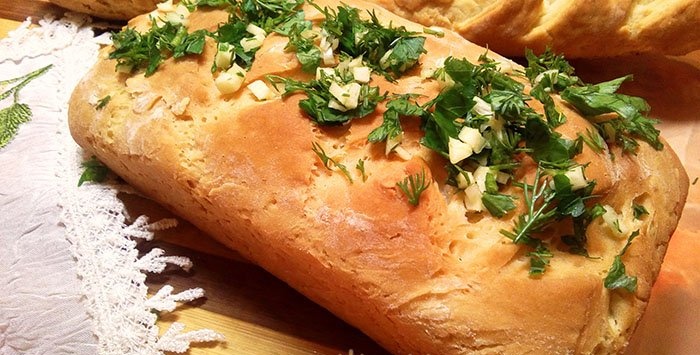
To bake bread you will need:
The recipe is designed for one serving of bread weighing 450 g. If the specified volume of dough is divided into 2 parts, you will get a small bread and a French loaf weighing 225 g.
The dough will require the following ingredients:
1. Pour warm water into a bowl, add yeast and stir the liquid until the yeast is completely dissolved.
2. When the yeast has dissolved, add sugar. Stir again. Sugar helps start the fermentation process. When the sugar has dissolved, add salt and vegetable oil.
3. Break an egg at room temperature over a bowl.
4. All ingredients are stirred until smooth.
5. Pour a third of the flour into the mixture. Before this, measure 400 grams using a scale, measuring cup or tablespoon. The entire volume is sifted twice. So that the flour is enriched with oxygen and helps the dough rise.
6. Mix the flour with a spoon in a bowl with other ingredients. A creamy mass is obtained.
7. The remaining flour is visually divided in half. Pour one part into a bowl, continuing to knead the dough with a spoon.
8. The dough is still sticky to the touch and not quite thick. This is a semi-finished product that needs to be allowed to rise for the first time. To do this, cover the container with a cotton towel and place it next to the oven for half an hour. In warmth and silence, the dough rises, increasing in volume.
9. After 30 minutes, remove the towel. Add the remaining flour to the dough.
10. Knead the dough by hand. With one hand, rotate the bowl in a circle, with the fingers of the other hand, separate the mass from the walls of the bowl, directing it towards the center. Continuing to rotate the bowl, collect the dough from the edge to the center, using your fingers and wrist. The mass is formed into a plastic ball. Cover with a towel and let rise in a warm place for another 40 minutes.
11. When the mass has doubled and air bubbles appear in it, remove the towel.The dough can be formed into bread.
12. Sprinkle the board with flour. The dough is laid out from the bowl onto the board.
13. With light movements, as if playfully, the edges are directed to the center with your fingers and pressed with your wrist. At the same time, rotate the workpiece with the other hand. When the lump stops sticking to your hands, roll it into a ball.
14. If you are planning to bake a regular large loaf, then at this stage the dough can be transferred to a baking dish, placed in a warm place for 20 - 30 minutes to rise and bake. If you plan to bake small bread and baguette, then the ball needs to be cut in half.
15. Knead one half and place in a bowl. The second is to give it an oval shape, place it in a rectangular baking dish, and make cuts with a sharp knife or blade. Cover and remove close to the oven to rise.
You can’t put the bread in the oven right away; it must be ready. This is the only way it will bake and acquire a light, airy crumb.
16. If you don’t have a round or rectangular baking dish, you can bake the loaf on a regular baking sheet. To do this, roll out the remaining part with a rolling pin into a rectangular layer (about 1 cm thick).
17. The surface is lubricated with vegetable oil using a brush. The edges of the layer overlap each other.
18. The folded layer is rolled out again into a rectangle, the surface is greased with oil, the dough is folded overlapping and rolled out. After repeating the process three times, the rectangle is rolled into a roll and the edges are pinched. The loaf is rolled out by hand, giving the shape of a long baguette. The oblique cuts characteristic of a loaf are made with a blade on top. Cover the baking sheet with parchment, grease it with oil and sprinkle with flour. After this, place the loaf on it, cover it and let it rise for half an hour.
19. When the bread has risen, carefully place it in a hot oven.The temperature for the first 10 minutes should be high - approximately 210 - 220 degrees.
20. After 10 minutes, spray the metal surface of the oven with water to generate steam. The steam will settle on the surface of the bread, forming a nice crust. The temperature is reduced to 180 degrees and baked for another 25 - 30 minutes.
21. When the baked goods are ready, turn off the oven. The door is opened, letting in cold air. After letting the hot bread stand for 5 minutes in the open oven, remove it and transfer it to a wire rack.
22. The finished baking can be sprinkled with chopped parsley, dill and garlic.

Necessary equipment and recipe
To bake bread you will need:
- container for kneading dough with a volume of at least 1.5 liters;
- tablespoon;
- knife;
- rolling pin;
- parchment paper;
- baking tray;
- silicone brush for greasing the baking sheet;
- baking dish (if you have one, if not, you can do without it);
- dough board;
- sieve for sifting flour;
- a very sharp knife or dangerous blade for cutting dough into shapes.
The recipe is designed for one serving of bread weighing 450 g. If the specified volume of dough is divided into 2 parts, you will get a small bread and a French loaf weighing 225 g.
The dough will require the following ingredients:
- 400 g of wheat flour (8 heaped tablespoons);
- 200 ml. warm water (can be replaced with milk);
- 1 level teaspoon of table salt;
- 1 tablespoon each of sugar and refined vegetable oil;
- 1 chicken egg;
- 15 g dry or alcoholic yeast.
Step-by-step process for making bread in the oven
1. Pour warm water into a bowl, add yeast and stir the liquid until the yeast is completely dissolved.
2. When the yeast has dissolved, add sugar. Stir again. Sugar helps start the fermentation process. When the sugar has dissolved, add salt and vegetable oil.
3. Break an egg at room temperature over a bowl.
4. All ingredients are stirred until smooth.
5. Pour a third of the flour into the mixture. Before this, measure 400 grams using a scale, measuring cup or tablespoon. The entire volume is sifted twice. So that the flour is enriched with oxygen and helps the dough rise.
6. Mix the flour with a spoon in a bowl with other ingredients. A creamy mass is obtained.
7. The remaining flour is visually divided in half. Pour one part into a bowl, continuing to knead the dough with a spoon.
8. The dough is still sticky to the touch and not quite thick. This is a semi-finished product that needs to be allowed to rise for the first time. To do this, cover the container with a cotton towel and place it next to the oven for half an hour. In warmth and silence, the dough rises, increasing in volume.
9. After 30 minutes, remove the towel. Add the remaining flour to the dough.
10. Knead the dough by hand. With one hand, rotate the bowl in a circle, with the fingers of the other hand, separate the mass from the walls of the bowl, directing it towards the center. Continuing to rotate the bowl, collect the dough from the edge to the center, using your fingers and wrist. The mass is formed into a plastic ball. Cover with a towel and let rise in a warm place for another 40 minutes.
11. When the mass has doubled and air bubbles appear in it, remove the towel.The dough can be formed into bread.
12. Sprinkle the board with flour. The dough is laid out from the bowl onto the board.
13. With light movements, as if playfully, the edges are directed to the center with your fingers and pressed with your wrist. At the same time, rotate the workpiece with the other hand. When the lump stops sticking to your hands, roll it into a ball.
14. If you are planning to bake a regular large loaf, then at this stage the dough can be transferred to a baking dish, placed in a warm place for 20 - 30 minutes to rise and bake. If you plan to bake small bread and baguette, then the ball needs to be cut in half.
15. Knead one half and place in a bowl. The second is to give it an oval shape, place it in a rectangular baking dish, and make cuts with a sharp knife or blade. Cover and remove close to the oven to rise.
You can’t put the bread in the oven right away; it must be ready. This is the only way it will bake and acquire a light, airy crumb.
16. If you don’t have a round or rectangular baking dish, you can bake the loaf on a regular baking sheet. To do this, roll out the remaining part with a rolling pin into a rectangular layer (about 1 cm thick).
17. The surface is lubricated with vegetable oil using a brush. The edges of the layer overlap each other.
18. The folded layer is rolled out again into a rectangle, the surface is greased with oil, the dough is folded overlapping and rolled out. After repeating the process three times, the rectangle is rolled into a roll and the edges are pinched. The loaf is rolled out by hand, giving the shape of a long baguette. The oblique cuts characteristic of a loaf are made with a blade on top. Cover the baking sheet with parchment, grease it with oil and sprinkle with flour. After this, place the loaf on it, cover it and let it rise for half an hour.
19. When the bread has risen, carefully place it in a hot oven.The temperature for the first 10 minutes should be high - approximately 210 - 220 degrees.
20. After 10 minutes, spray the metal surface of the oven with water to generate steam. The steam will settle on the surface of the bread, forming a nice crust. The temperature is reduced to 180 degrees and baked for another 25 - 30 minutes.
21. When the baked goods are ready, turn off the oven. The door is opened, letting in cold air. After letting the hot bread stand for 5 minutes in the open oven, remove it and transfer it to a wire rack.
22. The finished baking can be sprinkled with chopped parsley, dill and garlic.
Watch the video
Similar master classes
Particularly interesting
Comments (2)

